TYPE DESIGN INFORMATION PAGE last updated on Sat Jun 22 20:53:05 EDT 2024
FONT RECOGNITION VIA FONT MOOSE
|
|
|
|
|
Emoji | ||
|
|
|
|
SWITCH TO INDEX FILE
| |
Source Emoji is an emoji font project that began development in order to provide monochrome representative glyphs to the Unicode Consortium for emoji candidates that have been accepted by the UTC (Unicode Technical Committee) but have not yet been fully ratified to become a part of the official standard. [Google] [More] ⦿ | |
| |
A 2011 font by Google Inc, containing a limited set of emojis (icons). [Google] [More] ⦿ | |
Download free fonts and emojis for Google's Android P (2020): AndroidClock-Regular, CarroisGothicSC-Regular, ComingSoon, CutiveMono-Regular, DancingScript-Bold, DancingScript, DroidSansMono, GoogleSans-BoldItalic, GoogleSans-Bold, GoogleSans-Italic, GoogleSans-MediumItalic, GoogleSans-Medium, GoogleSans-Regular, NotoColorEmoji, NotoNaskhArabic-Bold, NotoNaskhArabicUI-Bold, NotoNaskhArabicUI, NotoNaskhArabic, NotoSansAdlam-Regular, NotoSansArmenian-Bold, NotoSansArmenian-Regular, NotoSansAvestan, NotoSansBalinese, NotoSansBamum, NotoSansBatak, NotoSansBengali-Bold, NotoSansBengaliUI-Bold, NotoSansBengaliUI, NotoSansBengali, NotoSansBrahmi, NotoSansBuginese, NotoSansBuhid, NotoSansCanadianAboriginal, NotoSansCarian, NotoSansChakma-Regular, NotoSansCham-Bold, NotoSansCham, NotoSansCherokee-Regular, NotoSansCoptic, NotoSansCuneiform, NotoSansCypriot, NotoSansDeseret, NotoSansDevanagari-Bold, NotoSansDevanagariUI-Bold, NotoSansDevanagariUI, NotoSansDevanagari, NotoSansEgyptianHieroglyphs, NotoSansEthiopic-Bold, NotoSansEthiopic, NotoSansGeorgian-Bold, NotoSansGeorgian, NotoSansGlagolitic, NotoSansGothic, NotoSansGujarati-Bold, NotoSansGujaratiUI-Bold, NotoSansGujaratiUI, NotoSansGujarati, NotoSansGurmukhi-Bold, NotoSansGurmukhiUI-Bold, NotoSansGurmukhiUI, NotoSansGurmukhi, NotoSansHanunoo, NotoSansHebrew-Bold, NotoSansHebrew, NotoSansImperialAramaic, NotoSansInscriptionalPahlavi, NotoSansInscriptionalParthian, NotoSansJavanese, NotoSansKaithi, NotoSansKannada-Bold, NotoSansKannadaUI-Bold, NotoSansKannadaUI, NotoSansKannada, NotoSansKayahLi, NotoSansKharoshthi, NotoSansKhmerUI-Bold, NotoSansKhmerUI, NotoSansKhmer-Regular, NotoSansLao-Bold, NotoSansLaoUI-Bold, NotoSansLaoUI, NotoSansLao, NotoSansLepcha, NotoSansLimbu, NotoSansLinearB, NotoSansLisu, NotoSansLycian, NotoSansLydian, NotoSansMalayalam-Bold, NotoSansMalayalamUI-Bold, NotoSansMalayalamUI, NotoSansMalayalam, NotoSansMandaic, NotoSansMeeteiMayek, NotoSansMongolian, NotoSansMyanmar-Bold, NotoSansMyanmarUI-Bold, NotoSansMyanmarUI, NotoSansMyanmar, NotoSansNKo, NotoSansNewTaiLue, NotoSansOgham, NotoSansOlChiki, NotoSansOldItalic, NotoSansOldPersian, NotoSansOldSouthArabian, NotoSansOldTurkic, NotoSansOriya-Bold, NotoSansOriyaUI-Bold, NotoSansOriyaUI, NotoSansOriya, NotoSansOsage-Regular, NotoSansOsmanya, NotoSansPhagsPa, NotoSansPhoenician, NotoSansRejang, NotoSansRunic, NotoSansSamaritan, NotoSansSaurashtra, NotoSansShavian, NotoSansSinhala-Bold, NotoSansSinhala, NotoSansSundanese, NotoSansSylotiNagri, NotoSansSymbols, NotoSansSymbols, NotoSansSyriacEastern, NotoSansSyriacEstrangela, NotoSansSyriacWestern, NotoSansTagalog, NotoSansTagbanwa, NotoSansTaiLe, NotoSansTaiTham, NotoSansTaiViet, NotoSansTamil-Bold, NotoSansTamilUI-Bold, NotoSansTamilUI, NotoSansTamil, NotoSansTelugu-Bold, NotoSansTeluguUI-Bold, NotoSansTeluguUI, NotoSansTelugu, NotoSansThaana-Bold, NotoSansThaana, NotoSansThai-Bold, NotoSansThaiUI-Bold, NotoSansThaiUI, NotoSansThai, NotoSansTibetan-Bold, NotoSansTibetan, NotoSansTifinagh, NotoSansUgaritic, NotoSansVai, NotoSansYi, NotoSerif-BoldItalic, NotoSerif-Bold, NotoSerif-Italic, NotoSerif, NotoSansAhom-Regular, NotoSansAnatolianHieroglyphs-Regular, NotoSansBassaVah-Regular, NotoSansBhaiksuki-Regular, NotoSansElbasan-Regular, NotoSansHatran-Regular, NotoSansLinearA-Regular, NotoSansManichaean-Regular, NotoSansMarchen-Regular, NotoSansMeroitic-Regular, NotoSansMiao-Regular, NotoSansMro-Regular, NotoSansMultani-Regular, NotoSansNabataean-Regular, NotoSansNewa-Regular, NotoSansOldNorthArabian-Regular, NotoSansOldPermic-Regular, NotoSansPahawhHmong-Regular, NotoSansPalmyrene-Regular, NotoSansPauCinHau-Regular, NotoSansSharada-Regular, NotoSansSinhalaUI-Bold, NotoSansSinhalaUI-Regular, NotoSansSoraSompeng-Regular, Roboto-BlackItalic, Roboto-Black, Roboto-BoldItalic, Roboto-Bold, RobotoCondensed-BoldItalic, RobotoCondensed-Bold, RobotoCondensed-Italic, RobotoCondensed-LightItalic, RobotoCondensed-Light, RobotoCondensed-MediumItalic, RobotoCondensed-Medium, RobotoCondensed-Regular, Roboto-Italic, Roboto-LightItalic, Roboto-Light, Roboto-MediumItalic, Roboto-Medium, Roboto-ThinItalic, Roboto-Thin, Roboto-Regular. [Google] [More] ⦿ | |
German designer at xplicit Berlin. Codesigner of Brush Poster Grotesk (2017, a fun semi grungy typeface designed for the children's exhibition 1,2,3 Kultummel from Labyrinth Kindermuseum Berlin by xplicit, Berlin (Annette Wüsthoff, Alexander Branczyk and Mascha Wansart) and Manuel Viergutz; loaded with glyphs and decorative extras like arrows, dingbats, emojis, symbols, geometric shapes, catchwords and decorative ligatures). [Google] [MyFonts] [More] ⦿ | |
In 2021, she contributed GT Maru Emoji (+Color) to Thierry Blancpain's rounded sans typeface superfamily, GT Maru. [Google] [More] ⦿ | |
A list of over 700 symbols that are widespread in mobile phone networks, and a proposal for their inclusion in Unicode. Dedicated site with Emoji Free. Si Daniels (Microsoft) analyzes the publication of the Apple Emoji font in 2011: Apple Color Emoji represents a significant milestone in both the history of type technology and character standardization. Of course color fonts are nothing new, with overprinting techniques in use from the earliest days of movable metal type. In digital typography layering has long been used to achieve multicolor results and color bitmap fonts have been around a while. However, Mac OS X Lion and the inclusion of the Apple Color Emoji font represent the first time a modern operating system has included both support and a showcase color font. Although the technology is basic, with color bitmaps included at two sizes in a proprietary sbix table, in years to come, as color fonts gain traction, we'll look back to 2011 as the year it all began. Of even more significance is the fact that the glyphs included in the font are Unicode encoded. In an effort initiated by Google and with significant help from Apple and Microsoft, 722 Emoji symbols were included in the recently published Unicode 6.0 standard, putting Emoji on par with the Latin alphabet and other writing systems encoded in Unicode. This means messages and documents containing Emoji are fully searchable and indexable, and Unicode Emoji fonts are included with Windows Phone 7.5 and the Windows 8 Developer Preview. The encoding effort was not without controversy, but effectively legitimizes nontraditional forms of written expression, and opens the door for the encoding of other symbols, including those found in popular symbol encoded fonts like Wingdings and Webdings. As to the design itself, it's more than adequate, the symbols are friendly and legible, but in reality the design isn't all that important. Of all the fonts issued in 2011 this is the one we'll all come back to in ten or twenty years as clearly being of the most historical significance. [Google] [More] ⦿ | |
Benjamin Melville
| |
Bitsnpicas
| A set of tools by Rebecca G. Bettencourt of Kreative Korp for creating and converting bitmap and emoji fonts. Input formats include .kbits (Bits'N'Picas native format), .sfd (FontForge), .bdf (X11 Bitmap Distribution Format), .suit (Mac OS Classic font suitcase (in the resource fork)), .dfont (Mac OS Classic font suitcase (in the data fork)), .png (SFont or RFont, Kreative Software's extension of SFont), .fzx (FZX by Andrew Owen (for ZX Spectrum)), .hmzk (Mi Band 2 Font Format), .dsf (DOSStart by Daniel L. Nice), .sbf (Sabriel Bitmap Font). Output file formats supported: kbits or kbnp (Bits'N'Picas native format), ttf (TrueType), bdf (X11 Bitmap Distribution Format), nfnt or suit (Mac OS Classic font suitcase (in the resource fork)), dfont (Mac OS Classic font suitcase (in the data fork)), png or sfont (SDL SFont), rfont (RFont, Kreative Software's extension of SFont), fzx (FZX by Andrew Owen (for ZX Spectrum)), hmzk (Mi Band 2 Font Format), sbf (Sabriel Bitmap Font). [Google] [More] ⦿ |
Tool to build color fonts using Google color-font format (CBDT/CBLC). [Google] [More] ⦿ | |
| |
Emoji is the Japanese term for the picture characters or emoticons used in Japanese electronic messages and webpages. The word literally means picture (e) letter (moji). The characters are used much like emoticons. Some emoji are very specific to Japanese culture, such as a bowing (apologizing) businessman, a typeface wearing a typeface mask, a white flower used to denote "brilliant homework" or a group of emoji representing popular foods: ramen noodles, dango, onigiri, Japanese curry, and sushi. The three main Japanese operators, NTT DoCoMo, au, and SoftBank Mobile (formerly Vodafone), have each defined their own variants of emoji. Some emoji character sets have been incorporated into Unicode, allowing them to be used outside Japan. Emoji have started appearing in Gmail (accessed via Google Labs). Several SMS applications for Android powered phones also provide plugins that allow the use of Emoji. Apple's Mac OS X operating system supports emoji as of version 10.7 Lion with the Apple Color Emoji typeface. [Google] [More] ⦿ | |
Quoting wikipedia: Hundreds of Emoji characters were encoded in the Unicode Standard in version 6.0 released in October 2010 (and in the related international standard ISO/IEC 10646). The additions, originally requested by Google (Kat Momoi, Mark Davis, and Markus Scherer wrote the first draft for consideration by the Unicode Technical Committee in August 2007) and Apple Inc. (whose Yasuo Kida and Peter Edberg joined the first official UTC proposal for 607 characters as coauthors in January 2009), went through a long series of commenting by members of the Unicode Consortium and national standardization bodies of various countries participating in ISO/IEC JTC1/SC2/WG2, especially the United States, Germany, Ireland (led by Michael Everson), and Japan; various new characters (especially symbols for maps and European signs) were added during the consensus-building process. The core emoji set as of Unicode 6.0 consists of 722 characters, of which 114 characters map to sequences of one or more characters in the pre-6.0 Unicode standard, and the remaining 608 characters map to sequences of one or more characters introduced in Unicode 6.0. There is no block specifically set aside for emoji. The new symbols were encoded in seven different blocks (some newly created), and there exists a Unicode data file called EmojiSources.txt that includes mappings to and from the Japanese vendors' legacy character sets. Additional link. [Google] [More] ⦿ | |
Emoji package
|
Github link. [Google] [More] ⦿ |
Extracts high-resolution emoji pngs from Apple Color Emoji.ttf. [Google] [More] ⦿ | |
EmojiOne is the open emoji standard. It uses the COLR/CPAL layered format. Adobe's Github link. [Google] [More] ⦿ | |
Color emoji OpenType-SVG font using EmojiOne Unicode 9.0 emoji with diversity and country flags. [Google] [More] ⦿ | |
Emoji set from Mozilla available as SVGs and TTF font. [Google] [More] ⦿ | |
| |
In 2017, the blackletter typeface Aktura was published by Fontstore. At Black Foundry, he designed the emoji font Bluumoji as part of Jean-Baptiste Morizot's brutalist Bluusuuperstar (2017). In 2018, he published Neptune (a 12-style geometric sans family with a dwarf "t") and the organic sans typeface Hongkong at Indian Type Foundry. Finder is a multiscript typeface developed in 2020 at Black Foundry by Jérémie Hornus, Gaëtan Baehr, Changchun Ye and Zhang Miao. This neutral sans is intended for interface design, and covers Arabic, Cyrillic, Greek, Hangul, Hebrew, Japanese, Latin, Simplified Chinese, Thai and Traditional Chinese. Zodiak (2021, Jérémie Hornus, Gaetan Baehr, Jean-Baptiste Morizot, Alisa Nowak, and Théo Guillard at Fontshare) is a free 24-style text family with Century-like newspaper roots and sturdy bracketed slab serifs. It was originally named Claire (2020). [Google] [MyFonts] [More] ⦿ | |
George Douros
| |
Graphics Bam
| Dorset, UK-based designer (b. 1981) of the scratchy typeface Bams Anger (2016) and BM Hand (2016). In 2018, he designed Wet Brush and Block Letters. In 2019, he released the dot matrix font Sweet Home, the glitch fonts Electro Fried, Fuzzy Monster and Bad TV, the grunge fonts Sloppy Comic, Dirty Boy, Cut It and Projector, the emoji font Type Face, the fat finger fonts Rok-A-Zine and Dope Bam, and the grungy Print Room. Typefaces from 2020: Harley Q, Germ, Drowned World, Busted Pen, Little Blob, Bad Speed Way, Stitch, Play Sign, Wax, Ignore Me, Excuse Me, Stew, Magic Tape (a tape font). [Google] [More] ⦿ |
Jean-Baptiste Morizot
| |
In 2017, he designed Xingkai Next (2017), a modern polygonal typeface for Hanzi, derived from cursive handwriting and Chinese calligraphy. In 2018, he released Astronomer (2018), an attractive Latin / Hanzi text typeface that refers to the Ming Dynasty astronomer / mathematician / scholar Xu Guangqi (aka Paul Siu, 1562-1633). [Google] [More] ⦿ | |
Graduate of Université Paris Diderot who works as a consultant in digital marketing in Paris. Born in 1980, he created the free hand-printed typefaces Carnet de Voyage (2016) and Lionel of Paris (2011). Typefaces from 2020: PMO Dashboard (emojis), Sticks+Spots, Sans Couture, N8ghtmare, Contre-Poincon (handcrafted). [Google] [More] ⦿ | |
German designer at xplicit Berlin. Codesigner of Brush Poster Grotesk (2017, a fun semi grungy typeface designed for the children's exhibition 1,2,3 Kultummel from Labyrinth Kindermuseum Berlin by xplicit, Berlin (Annette Wüsthoff, Alexander Branczyk and Mascha Wansart) and Manuel Viergutz; loaded with glyphs and decorative extras like arrows, dingbats, emojis, symbols, geometric shapes, catchwords and decorative ligatures). [Google] [MyFonts] [More] ⦿ | |
Masyafi Studio (or: Letterayu, Sasqia Creative, Ayyu, Sri Rahayu)
|
|
Muan's free emoji fonts include Emoji (find the emoji that echoes your mind). Muan also published Emojilib, an emoji keyword library, and Emoji Minesweeper, a Minesweeper game made with emojis. [Google] [More] ⦿ | |
Muhammad Yafinuha
| |
Simple emoji support for Node.js projects. [Google] [More] ⦿ | |
Norio Kanisawa
| Japanese designer, b. 1984, Kyushu, who is based in Shizuoka. She specializes in rounded cute pop fonts, a genre one could call the kawaii style, for Latin, kana and kanji. Designer of the rounded Japanese pop culture font Marshmallow Pop (2016, Latin and kana), Marsh Mallow Pop Heart (2018), Ame Chan Pop Maru (2018), Yancha Pop (2018), Otome Mincyou (2018), Hachi Maru Pop (2018), 8 bit Darling (2018), Omekashi Emoji (2018), Omekashi Font Pro (2018). [Google] [MyFonts] [More] ⦿ |
Initially a color font, Noto Emoji was enlarged in 2021 to a five-weight black and white version that includes 3663 emojis. Google Fonts link. [Google] [More] ⦿ | |
Nozomi Matsuki
| |
Phantom Foundry
|
In 2015, he switched to the commmercial camp, and cooperated with the Fontyou team in the production of the didone typeface family Télémaque FY, which brings Didot in its most rigid and tuxedoed manner, for the black-and-white fashion mags showing James Bond with a black bowtie and spotless high-contrast shirt. In 2016, Alisa Nowak, Julie Soudanne and Jean-Baptiste Morizot co-designed Graphico (Indian Type Foundry): Its letterforms are industrial and square-sided. The typeface looks like the product of precision mechanics: it should be featured together with tech---either old tech like appliances or watches, or new tech like apps and laptop stands. Still for Indian Type Foundry in 2016, he designed the hipster sans typeface family Bobo---perhaps one of the greatest hipster typefaces of all times. Bobo stands for bourgeois Bohemian---I am not sure it is identical to gauche caviar, but that is the societal class the author of this typographic encyclopedia belongs to. In 2016, Morizot designed the high contrast wedge serif newspaper typeface families Editor and Editor Condensed, the 6-style techno font Technor (free at Fontshare; squarish with inflated horizontal strokes), and the car license plate font License at Indian Type Foundry. In 2017, as part of the new Black Foundry, he extended his free font Bluu and even added a variable font to the set, as well as a collection of emojis. The new name is Bluusuuperstar: Bluu Suuperstar is a brutalist serif typeface featuring very prominent triangular-wedges for serifs and terminals. Bluu Suuperstar's letters have a tall x-height, and the diamond dots are a chief characteristic of the design. Notches like these [diamonds] are found in several blackletter designs; but most-famously in the romain du roi created for Louis XIV. Nothing in Bluu Suuperstar is soft or cuddly; this is a sharp typeface, and you could cut yourself on its letters. The separate emoji font, designed by Gaëtan Baehr, is wittily named Bluumoji, and it includes 73 glyphs. In 2018, Morizot set up Phantom Foundry, where he published Super Fat Bob (2018) and Phantom Sans (2018: trying to bring some warmth to the geometric sans genre, and now also a variable typeface). Typefaces from 2019: Cosmetic (Indian Type Foundry: a high-contrast fashion mag sans family), TXT25 (an unconventional extreme-axis (variable) text typeface). Typefaces from 2020: Karrik (a free britalist font designed with Lucas Le Bihan), Token (at Future Fonts---on purpose, Morizot mixes discordant styles to create a Frankenstein monster of a typeface; he added Token Bebop in 2021), Kola (a molecular rounded stencil typeface published at Indian Type Foundry; free at Fontshare) Typefaces from 2021: Pally (at Fontshare; a 3-style asymmetric rounded sans with a playful children's book or comic strip rhythm), Zodiak (2021, Jérémie Hornus, Gaetan Baehr, Jean-Baptiste Morizot, Alisa Nowak, and Théo Guillard at Fontshare; a free 24-style text family with Century-like newspaper roots and sturdy bracketed slab serifs that was originally named Claire (2020)), NaN Tragedy (an 8-style serif with display and Text subfamilies, and a variable font option; Tragedy is classical and sturdy, yet mischievous and unconventional). Fontshop link. Future Fonts link. Home page. Fontsquirrel link. Jean-Baptiste Morizot at Velvetyne. [Google] [MyFonts] [More] ⦿ |
Rebecca G. Bettencourt
| |
Between 2017 and 2021, inspired by Japanese pop culture, he developed the rounded sans family GT Maru (maru means round in Japanese). It is accompanied by a bubblegum-like typeface family, GT Maru Mega (which was produced by Huw Williams), and a monospaced family, GT Maru Mono. All three families have variable fonts as well. Grilli Type and Anya Danilova added GT Maru Emoji (in black and white, and color). [Google] [More] ⦿ | |
Designer of My Font Is Slimey (2019) ad Google Emojis (2020). [Google] [More] ⦿ | |
Color emoji OpenType-SVG font using Twitter Unicode 9.0 emoji with diversity and country flags. [Google] [More] ⦿ | |
Twitter Emoji (Twemoji)
|
Twitter link. Github link. CTAN link for Twemoji Mozilla (in color). Github link for Twemoji Mozilla (in color). Note that the resulting font will only be useful on systems that support layered color TrueType fonts; this includes Windows 8.1 and later, as well as Mozilla Firefox and other Gecko-based applications running on any platform. [Google] [More] ⦿ |
Unicode Fonts for Ancient Scripts
|
Since George permits redistribution, I am offering his work for download here. [Google] [More] ⦿ |
Emoji data extracted from Unicode Technical Report #51 v1.0 – v5.0. [Google] [More] ⦿ | |
Xiangdong Zeng
| |
Xiangdong Zeng
| |
|
|
|
|
|

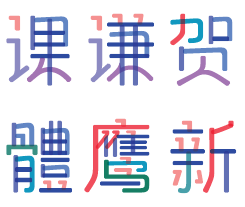 Shanghai, China-based type foundry, est. 2017, with a foreign office in Berlin. They specialize in multilingual and multiscriptual typography and type matching, in particular for Chinese, Latin, Cyrillic and Arabic. Their font catalog in 2020:
Shanghai, China-based type foundry, est. 2017, with a foreign office in Berlin. They specialize in multilingual and multiscriptual typography and type matching, in particular for Chinese, Latin, Cyrillic and Arabic. Their font catalog in 2020:  Moscow-based graphic artist and illustrator of books and periodicals, who has worked with the Gelios publishing house and the magazines Pioner, Smena, Literaturnaya Gazeta, Bolshoi Gorod and InLiberty. In 2016-2017, he designed the CSTM Emoji character font, which is a set of emoticons that comprises illustrations of emotions, facial expressions, gestures, and assorted objects. [
Moscow-based graphic artist and illustrator of books and periodicals, who has worked with the Gelios publishing house and the magazines Pioner, Smena, Literaturnaya Gazeta, Bolshoi Gorod and InLiberty. In 2016-2017, he designed the CSTM Emoji character font, which is a set of emoticons that comprises illustrations of emotions, facial expressions, gestures, and assorted objects. [
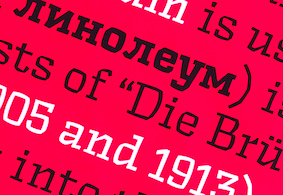 Anya Danilova is a type designer from Moscow, currently based in The Hague. She studied at Moscow State University of Printing Arts and worked as a graphic designer at Labs Studio and as a type designer at Bureau Gorbunov. She now works on type-related projects and is always open to new collaborations. Graduate of the
Anya Danilova is a type designer from Moscow, currently based in The Hague. She studied at Moscow State University of Printing Arts and worked as a graphic designer at Labs Studio and as a type designer at Bureau Gorbunov. She now works on type-related projects and is always open to new collaborations. Graduate of the 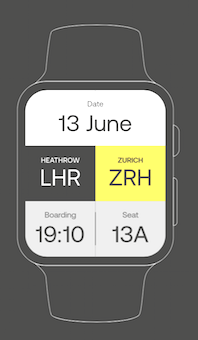 CoType is the London-based type foundry of Mark Bloom and Joe Leadbeater, est. 2019. Their typefaces include
CoType is the London-based type foundry of Mark Bloom and Joe Leadbeater, est. 2019. Their typefaces include 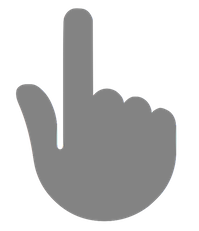 This package from 2020 allows users to typeset emoji in a LATEX document. Zeng also compares various popular emoji fonts:
This package from 2020 allows users to typeset emoji in a LATEX document. Zeng also compares various popular emoji fonts:  Hong Kong-based creator of the Chinese typeface
Hong Kong-based creator of the Chinese typeface 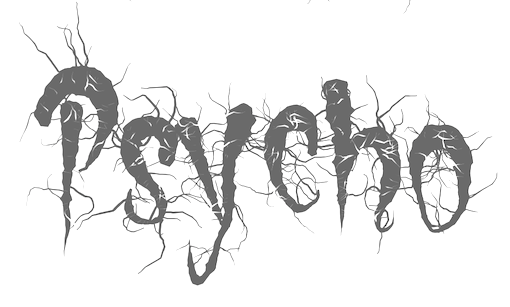 French type designer. In 2016, Gaetan Baehr and Jeremie Hornus co-designed
French type designer. In 2016, Gaetan Baehr and Jeremie Hornus co-designed 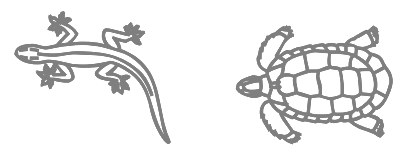 [
[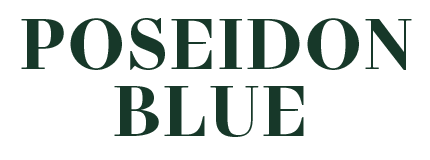 [
[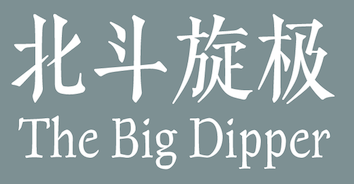 Designer at the Shanghai, China-based type foundry 3type of Weaf Mono (2017-2018), a monospaced monolinear sans family created together with Zheng Chuyang, covering Latin, Hanzi (Chinese), Arabic, Cyrillic and Devanagari. It also has some emoji characters.
Designer at the Shanghai, China-based type foundry 3type of Weaf Mono (2017-2018), a monospaced monolinear sans family created together with Zheng Chuyang, covering Latin, Hanzi (Chinese), Arabic, Cyrillic and Devanagari. It also has some emoji characters. 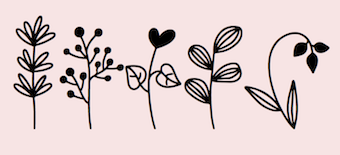 Indonesian type designer who operates under a variety of names. His fonts comprise mainly handcrafted and script typefaces, and dingbats, including many floral icon sets. As of June 2021, the typefaces included AmoceliaRegular, BalineseRegular, BlackAngelsFreeRegular, Heylie, FunnyRabbitRegular, HappySummerRegular, HelloUnicorn, NeutoSansDemoRegular, RasidayRegular, RhenataDemoRegular, Aladin, Aldebara, Alphabet-Wave, Amoxan, ANGELA, animasi-eyes, Annabelle, Azhitromicin, Baby-Cute, Baby-doll, BALOTAK, Beautiful-leaves, BELAROSA, Black-Forest, Blue-ocean, Booster, Botana, Botani, Bougenville-flowers, broken-Heart, Browie, BUBBLE-BOBA, Butterfly, cakiss, Cattrine, Ceftriaxon, CellineHeylie, Charles, Cheerful-Year, Chocolate, Christmas, Coffee-Break, Coffee-Robusta, Crunchy, CUTE-LOVE, Cutes, Delicious-Food, Devil-Beside-You, DIAMOND, Digital-Marketing, Dingbata-Regular, Donuts, DrawingRainbow, Emerald, Emot, Euis, everybody, explore, Floralipart2, FLORENA, flowers, Flowery, FRIENDLY, Funny-Kids, Funny-Rabbit, Gendis-Flower, GEORGIOS, Golden-Pumpkin, Gravera, Greentea-Milkshake, Gupis, Happy-Christmas, Happy-New-Year, Happy-Shopping, Happy-Summer, Happy-weekend, Hello-Christmas, HelloUnicorn, Hellow-January, Hidrocloroquin, Hollster, Honeymoon, Jelline, JONS, Just-Friend, Kidos, kindergarten, Krriiukk, Leaf, Lets-go-to-school, Lighting, Lisan, Love-Bubbles, Lovely, Mandala-Clip-Art-Regular, Mandara-Regular, Manopo, Memoriam, Mennuah, Methilprednisolon, Michy, Miracle-Of-Christmas, Mom-cooking, MONOLOG, Moo-Milky, MOUW, My-Princess, Naturally, North-Star, NOTHING, ONE-MORE, One-Stripe, Outline, Photography, Pillow, Playground, Poco-poco, Pompom, POW-KIDS, Princess, PURPLE, PUZZLE, QIWQIW, Rannel, Rebuilt, Remember, Richeese, Rolling-door, Sana-sini, Sand, sandra, Sansan, Sansullin, Santa-Claus, Saranghae, Sarapan, Sarwendah, Say-Hello, Scarlove, Serenada, SHIZUKA, Sky-face, Solaria, Solatip, Squaress, Srengngee, StarBold, START-UP, Stay-story, Stricker, Stripe-Calm, Sunshine, Taro-Flowers, Thai-tea, Travelling, Tremor, Unicorn-Beautifull, UPNORMAL, wedding-knick-knacks, Welcome-Santa, WILD, Willy, Winner, Winter-Soraya, Wisconsin, Zara.
Indonesian type designer who operates under a variety of names. His fonts comprise mainly handcrafted and script typefaces, and dingbats, including many floral icon sets. As of June 2021, the typefaces included AmoceliaRegular, BalineseRegular, BlackAngelsFreeRegular, Heylie, FunnyRabbitRegular, HappySummerRegular, HelloUnicorn, NeutoSansDemoRegular, RasidayRegular, RhenataDemoRegular, Aladin, Aldebara, Alphabet-Wave, Amoxan, ANGELA, animasi-eyes, Annabelle, Azhitromicin, Baby-Cute, Baby-doll, BALOTAK, Beautiful-leaves, BELAROSA, Black-Forest, Blue-ocean, Booster, Botana, Botani, Bougenville-flowers, broken-Heart, Browie, BUBBLE-BOBA, Butterfly, cakiss, Cattrine, Ceftriaxon, CellineHeylie, Charles, Cheerful-Year, Chocolate, Christmas, Coffee-Break, Coffee-Robusta, Crunchy, CUTE-LOVE, Cutes, Delicious-Food, Devil-Beside-You, DIAMOND, Digital-Marketing, Dingbata-Regular, Donuts, DrawingRainbow, Emerald, Emot, Euis, everybody, explore, Floralipart2, FLORENA, flowers, Flowery, FRIENDLY, Funny-Kids, Funny-Rabbit, Gendis-Flower, GEORGIOS, Golden-Pumpkin, Gravera, Greentea-Milkshake, Gupis, Happy-Christmas, Happy-New-Year, Happy-Shopping, Happy-Summer, Happy-weekend, Hello-Christmas, HelloUnicorn, Hellow-January, Hidrocloroquin, Hollster, Honeymoon, Jelline, JONS, Just-Friend, Kidos, kindergarten, Krriiukk, Leaf, Lets-go-to-school, Lighting, Lisan, Love-Bubbles, Lovely, Mandala-Clip-Art-Regular, Mandara-Regular, Manopo, Memoriam, Mennuah, Methilprednisolon, Michy, Miracle-Of-Christmas, Mom-cooking, MONOLOG, Moo-Milky, MOUW, My-Princess, Naturally, North-Star, NOTHING, ONE-MORE, One-Stripe, Outline, Photography, Pillow, Playground, Poco-poco, Pompom, POW-KIDS, Princess, PURPLE, PUZZLE, QIWQIW, Rannel, Rebuilt, Remember, Richeese, Rolling-door, Sana-sini, Sand, sandra, Sansan, Sansullin, Santa-Claus, Saranghae, Sarapan, Sarwendah, Say-Hello, Scarlove, Serenada, SHIZUKA, Sky-face, Solaria, Solatip, Squaress, Srengngee, StarBold, START-UP, Stay-story, Stricker, Stripe-Calm, Sunshine, Taro-Flowers, Thai-tea, Travelling, Tremor, Unicorn-Beautifull, UPNORMAL, wedding-knick-knacks, Welcome-Santa, WILD, Willy, Winner, Winter-Soraya, Wisconsin, Zara.  An extensive free dingbat typeface designed in 2013 by Monotype Imaging.
An extensive free dingbat typeface designed in 2013 by Monotype Imaging. 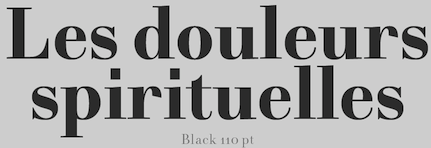 Type designer at the open source type foundry
Type designer at the open source type foundry  Zürich-based graphic designer (b. 1985) associated with
Zürich-based graphic designer (b. 1985) associated with  This is a fantastic source of free high-quality fonts for scripts of the greater Aegean vicinity, Egyptian Hieroglyphs, Meroitic, Sumero-Akkadian Cuneiform, Musical Symbols and all Symbol Blocks in the Unicode Standard. George Douros is their Greek font designer. His free fonts come with this exemplary footnote: In lieu of a licence: Fonts in this site are offered free for any use; they may be opened, edited, modified, regenerated, posted, packaged and redistributed. Many of his fonts contributed to important section in the GNU Freefont project. Here is the list:
This is a fantastic source of free high-quality fonts for scripts of the greater Aegean vicinity, Egyptian Hieroglyphs, Meroitic, Sumero-Akkadian Cuneiform, Musical Symbols and all Symbol Blocks in the Unicode Standard. George Douros is their Greek font designer. His free fonts come with this exemplary footnote: In lieu of a licence: Fonts in this site are offered free for any use; they may be opened, edited, modified, regenerated, posted, packaged and redistributed. Many of his fonts contributed to important section in the GNU Freefont project. Here is the list: 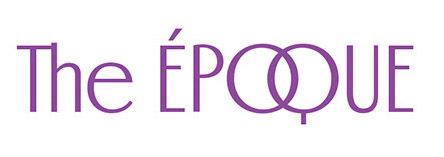 Designer of these fonts:
Designer of these fonts: